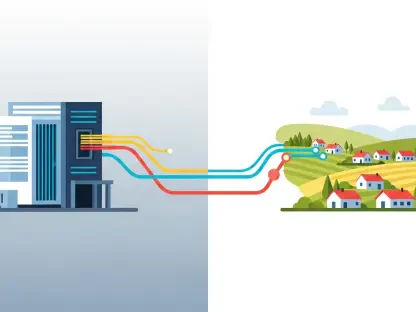As we dive into the rapidly evolving world of telecommunications, I’m thrilled to sit down with Vladislav Zaimov, a seasoned specialist in enterprise telecommunications and risk management of vulnerable networks. With his extensive experience, Vladislav offers a unique perspective on the technological advancements shaping our future, from the rollout of 5G Standalone to the early whispers of 6G, and the integration of AI into telecom services. In this conversation, we explore how these innovations are transforming connectivity, creating new opportunities for operators, and addressing critical security and scalability challenges as we look toward 2026.
How does 5G Standalone differ from earlier 5G versions, and why do you think it’s poised to become the standard for operators by 2026?
5G Standalone, or SA, is a game-changer because it operates with a fully independent, cloud-native core, unlike earlier non-standalone versions that relied on 4G infrastructure for support. This independence allows for greater flexibility, deeper automation, and capabilities like edge computing offload, which are critical for modern services. By 2026, I believe most Tier 1 operators will adopt SA as the default because it unlocks advanced features needed for tailored, high-value services—think industrial automation or immersive communication. It’s not just about speed; it’s about building a smarter, more responsive network foundation.
In what ways do you see the shift to 5G SA opening up new revenue opportunities for operators?
The move to 5G SA empowers operators to go beyond basic connectivity and offer specialized services. For instance, they can create private networks for industries like manufacturing, where ultra-reliable low-latency communication is a must. It also enables slicing the network to provide customized performance for different customers, which can be a premium offering. By 2026, I expect operators to monetize these capabilities through partnerships with enterprises needing mission-critical solutions, turning the network into a platform for innovation rather than just a pipe for data.
With the finalization of 3GPP Release 18, what advancements in 5G-Advanced are you most excited about for specific applications like industrial automation or extended reality?
Release 18, which defines 5G-Advanced, brings some incredible enhancements. I’m particularly excited about the improvements in energy efficiency and positioning accuracy, which are vital for industrial automation—think robots or drones in a factory that need precise coordination. For extended reality, the updates to support immersive communications mean better handling of high-bandwidth, low-latency applications like virtual reality training or gaming. These advancements make 5G-A a powerful tool for industries looking to digitize and innovate at scale by 2026.
How do you anticipate 5G SA and 5G-A will impact everyday consumers compared to businesses?
For everyday consumers, 5G SA and 5G-A will likely mean faster, more reliable connections and richer experiences, like seamless streaming or augmented reality apps on the go. But the real transformation will be for businesses. These technologies enable use cases like large-scale IoT deployments for smart cities or mission-critical services in healthcare and logistics. While consumers will notice incremental improvements, businesses will see a paradigm shift in how they operate, leveraging tailored network capabilities for efficiency and growth.
Can you break down what ‘AI as a Service’ means in the telecom space, and how it differs from relying on cloud services from major tech providers?
AI as a Service in telecom refers to operators hosting and offering AI capabilities directly within their networks, rather than just funneling traffic to hyperscalers like big tech cloud providers. It’s about embedding AI at the edge or within the network core to provide specialized services, like real-time analytics or security solutions. Unlike cloud services, which are often generalized, this approach allows operators to customize AI offerings for specific industries or local needs, maintaining control over data and performance, which is a big differentiator.
What’s driving operators to host AI infrastructure themselves, especially at the network edge?
Operators are motivated by the chance to capture value rather than ceding it to hyperscalers. Hosting AI infrastructure at the edge reduces latency, which is critical for applications like autonomous vehicles or real-time security monitoring. It also addresses data sovereignty concerns, as sensitive information can stay within a local network. By 2026, this trend will grow as operators see the edge as a strategic asset to offer low-latency, high-security AI services that big cloud providers can’t match in the same way.
Could you share an example of an industry or application where AI as a Service could have a significant impact by 2026?
One area I’m excited about is mission-critical industries like healthcare. Imagine hospitals using AI as a Service for real-time patient monitoring, where edge-based AI analyzes data from medical devices instantly to alert staff of emergencies. Telecom operators can provide the low-latency, secure infrastructure needed for such applications. By 2026, this could revolutionize how critical care is delivered, ensuring faster responses and better outcomes, all powered by the operator’s network.
How can operators turn AI services into a sustainable revenue stream without becoming just a pass-through for other providers?
Operators need to focus on differentiation by leveraging their unique position in the network ecosystem. They can develop niche AI services tailored to specific verticals, like predictive maintenance for manufacturing or fraud detection for finance, where their control over data and connectivity adds value. Building partnerships with enterprises and offering end-to-end solutions—combining AI with network slicing or edge computing—will be key. By 2026, operators who position themselves as strategic partners rather than mere conduits will see AI as a profitable business line.
With 5G still rolling out in many regions, why are countries like China and parts of Asia already accelerating toward 6G development by 2026?
It’s largely about establishing technological leadership and influence over global standards. Countries like China see 6G as a chance to shape the future of connectivity, much like they did with 5G. By pushing pre-standards trials by 2026, they’re positioning themselves to define how 6G works, from spectrum allocation to use cases. It’s also a matter of national pride and economic advantage—leading in 6G means attracting investment and driving innovation domestically before others catch up.
What are some of the standout features or technologies you expect to emerge in early 6G trials, such as the ‘Golden Bands’ or sub-THz bands?
Early 6G trials will likely focus on multi-band integration, with the so-called ‘Golden Bands’ around 6GHz offering a sweet spot for coverage and capacity. Sub-THz bands, on the other hand, promise extremely high data rates and ultra-low latency, ideal for futuristic applications like holographic communication. Beyond spectrum, I expect trials to explore Integrated Sensing and Communications, where networks can sense environments while transmitting data, paving the way for smarter cities and autonomous systems by the time 6G matures.
Beyond faster speeds, what broader changes or innovations do you think 6G will introduce compared to 5G?
6G will go far beyond speed, focusing on a holistic reimagining of connectivity. We’re talking about native integration of AI for wireless decision-making, edge computing for near-instant processing, and technologies like Reconfigurable Intelligent Surfaces to dynamically optimize signal paths. 6G will also prioritize sustainability with energy-efficient designs and enable new paradigms like quantum-secure communications to counter future cyber threats. It’s about creating a network that’s not just faster, but smarter and more adaptive to diverse needs.
How crucial is it for certain countries to lead in shaping 6G standards, and what does this mean for global tech competition?
Leading in 6G standards is incredibly important because it sets the rules of the game—countries that define the technology gain economic and geopolitical leverage. It influences everything from patents to market access for their companies. For global tech competition, this means a race to innovate and collaborate, but also potential fragmentation if standards diverge. By 2026, early leaders will likely solidify their influence, impacting how evenly—or unevenly—6G benefits are distributed worldwide.
What’s your forecast for the role of AI and advanced connectivity in shaping telecommunications over the next decade?
I believe AI and advanced connectivity will be the twin pillars of telecom evolution over the next ten years. AI will become deeply embedded in networks, not just for optimization but as a core service offering, driving everything from predictive maintenance to personalized customer experiences. Connectivity, through 5G-A and eventually 6G, will enable entirely new ecosystems—think smart cities or global IoT networks operating seamlessly. The challenge will be balancing innovation with security and equity, ensuring these technologies empower rather than divide. By 2035, I expect telecom to be less about pipes and more about intelligent platforms that transform how we live and work.









